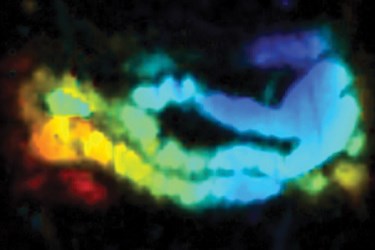New "Nano-juice" Could Improve Gastrointestinal Imaging
By Joel Lindsey

A team of researchers has created a substance deemed “nano-juice” that could provide real-time imaging of the human intestines.
The project is a collaboration between researchers from the University at Buffalo, Roswell Park Cancer Institute, the University of Wisconsin-Madison, McMaster University in Canada, and Pohang University of Science and Technology in Korea.
“Conventional imaging methods show the organ and blockages, but this method allows you to see how the small intestine operates in real time,” Jonathan Lovell, PhD, assistant professor of biomedical engineering at the University at Buffalo, and a lead researcher on the project, said in a recent press release. “Better imaging will improve our understanding of [gastrointestinal] diseases and allow doctors to more effectively care for people suffering from them.”
Researchers involved with the project used a family of dyes called naphthalcyanines — molecules that absorb large amounts of light in the near-infrared spectrum and, when exposed to pulsed laser lights, could be effective for producing images of internal organs.
Unfortunately, the naphthalcyanines are not suitable for use in the human body, because they can be absorbed into the blood stream and cannot disperse in liquid.
To address these issues, the researchers created tiny nanoparticles they called “nanonaps” that contained the naphthalcyanines in a structure that allowed them to disperse in liquid. This change allowed the dye nanoparticles to pass safely through the human body, according to the press release.
In early tests, researchers suspended the dye nanoparticles in a drinkable liquid to create a “nano-juice.” When the liquid was administered to mice, researchers were able to use photoacoustic tomography (PAT) to track the flow of the nano-juice through the mice’s bodies and to produce high-quality, real-time images of the animals’ intestines.
Details and results from these initial tests have been published recently in the journal Nature Nanotechnology.
Moving forward, researchers plan to continue refining the process and improving the nano-juice in preparation for human use. They said that the new liquid could one day provide a non-invasive and effective way to image the insides of the human intestine and pave the way for more effective modes of treatment for ailments like irritable bowel syndrome, celiac disease, Crohn’s disease, and other gastrointestinal problems.
In particular, researchers said that the ability to provide real-time images of the human gastrointestinal tract in real-time could significantly improve the treatment of GI illnesses, and could provide a more effective alternative to traditional forms of imaging such as X-ray and MRI.
